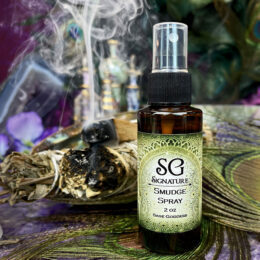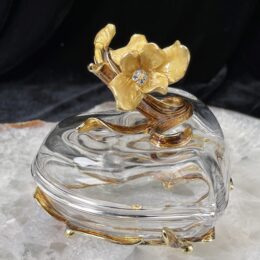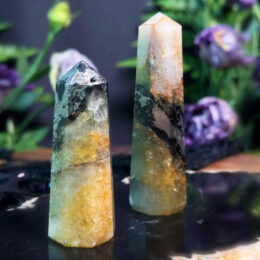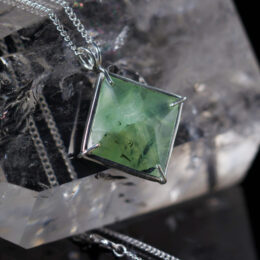Your cart is currently empty!
Citrine Guide: Properties and Meaning
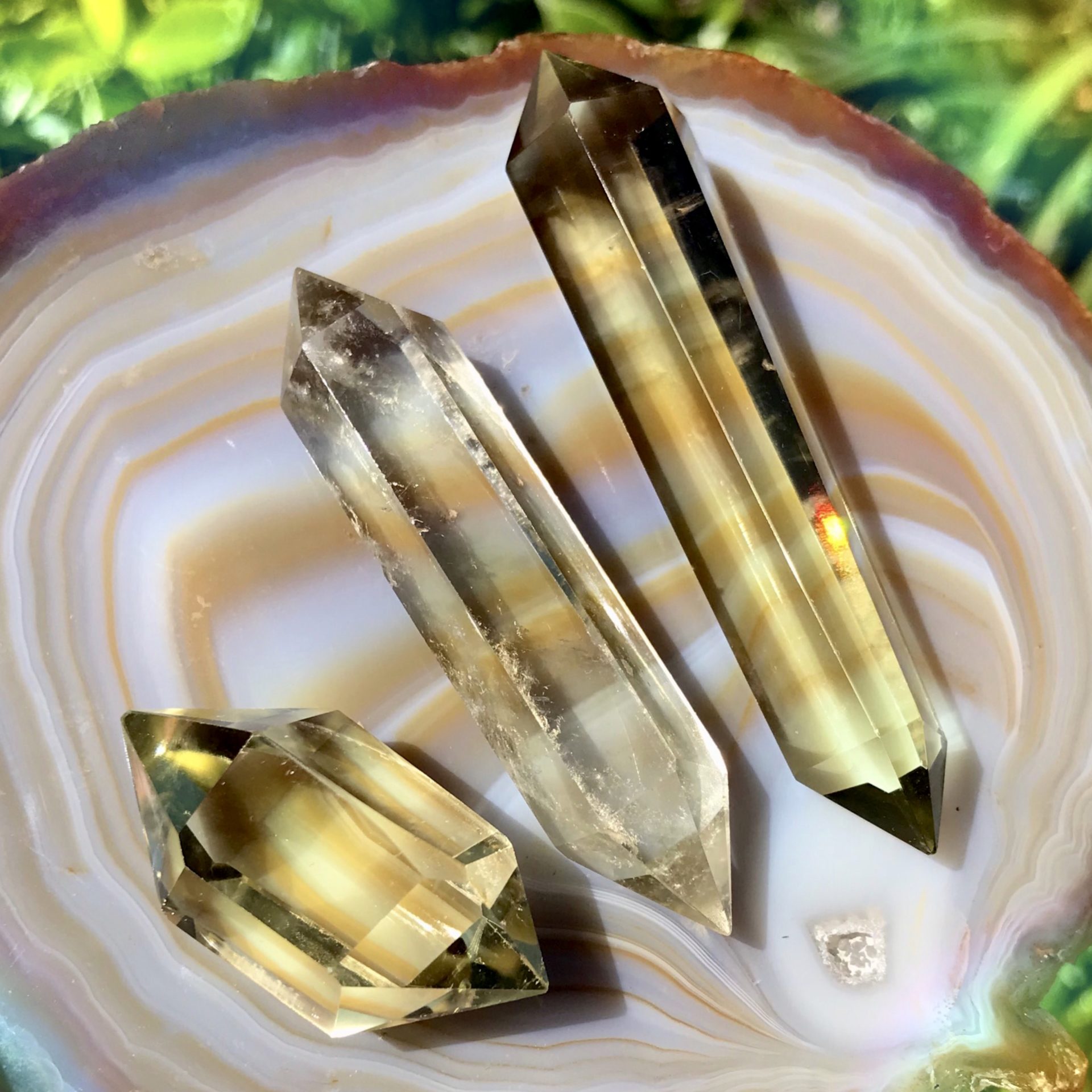
Citrine Properties
Color: YellowMohs Hardness: 7Chakra: Solar PlexusCrystal Structure:TrigonalLocation: Africa, Brazil
About Citrine
Citrine is a powerful crystal associated with the solar plexus chakra, located in the upper abdomen. It has a vibrant yellow color, which is also associated with this energy center. Citrine balances and heals the solar plexus chakra, promoting self-worth, confidence, and personal power. Additionally, this crystal enhances mental clarity, prosperity, and manifestation. Due to its reputation for bringing money magic, Citrine is often referred to as the “merchant’s stone.” It is a popular choice for those seeking abundance and success in various aspects of life.
The history of Citrine
The history of Citrine dates back to ancient times. It was highly valued by civilizations such as the Romans and Greeks, who believed it possessed powerful properties. The name “Citrine” is derived from the French word “citron,” meaning lemon, due to its vibrant yellow color resembling the citrus fruit. In ancient times, Citrine was often used as a protective talisman against negative energies and as a symbol of wealth and abundance. It was also believed to have healing properties, particularly in relation to digestion and metabolism. Throughout history, Citrine has been treasured for its beauty and metaphysical properties, making it a sought-after gemstone for both spiritual and decorative purposes.
What are Citrine healing properties?
Citrine promotes mental clarity, prosperity, and manifestation. It balances and heals the solar plexus chakra, responsible for our sense of self-worth, confidence, and personal power. Citrine’s vibrant yellow color is associated with this chakra, making it an ideal stone for balancing and healing this energy center.
What are Citrine Metaphysical/Spiritual Properties?
Citrine is a powerful crystal associated with the solar plexus chakra, located in the upper abdomen. It promotes abundance and success in all areas of life. Citrine is often referred to as the “merchant’s stone” due to its reputation for bringing money magic. It enhances one’s sense of self-worth, confidence, and personal power. Citrine’s vibrant yellow color is also associated with the solar plexus chakra, making it an ideal stone for balancing and healing this energy center.
Citrine FAQ
What is Citrine used for?
Citrine is commonly used as a gemstone in jewelry. Its vibrant yellow color makes it a popular choice for rings, necklaces, and bracelets. It is also used in decorative pieces such as sculptures and figurines. Additionally, Citrine has various metaphysical properties and is often used in crystal healing practices.
What does Citrine do?
Citrine has a range of positive effects on the mind, body, and spirit. It promotes abundance, prosperity, and success, making it a popular stone for attracting wealth and good fortune. Citrine also enhances creativity, boosts self-confidence, and stimulates mental clarity. It is often used to alleviate depression, anxiety, and negative energy.
Can Citrine go in water?
Citrine is generally safe to be placed in water. However, prolonged exposure to water may cause the stone to fade or lose its luster over time. It is recommended to avoid submerging Citrine in water for extended periods and to gently dry it after cleaning.
How to cleanse Citrine?
To cleanse Citrine, you can use various methods such as placing it under running water, burying it in the earth, or using smoke from sage or incense. Another effective way is to leave the stone in direct sunlight for a few hours. It is important to choose a method that resonates with you and your personal beliefs.
What does Citrine do spiritually?
Spiritually, Citrine carries the energy of the sun, bringing warmth, joy, and positivity into one’s life. It cleanses and energizes the aura, promoting spiritual growth and inner strength. Citrine is also associated with the solar plexus chakra, which governs personal power, confidence, and manifestation.
How to clean Citrine?
To clean Citrine, you can use a soft cloth or brush with mild soap and warm water. Gently scrub the stone to remove any dirt or debris. Avoid using harsh chemicals or ultrasonic cleaners, as they may damage the stone. After cleaning, rinse the Citrine thoroughly and pat it dry with a soft cloth.
How to spot fake Citrine?
Fake Citrine is often made by heat-treating or irradiating other types of quartz to achieve its yellow color. Natural Citrine, on the other hand, is rare and usually has a pale yellow to golden hue. When examining a Citrine, look for natural variations in color and clarity. Fake Citrine may have a more uniform and intense yellow color. Additionally, genuine Citrine is usually more expensive than its synthetic counterparts.
Is Citrine toxic?
No, Citrine is not toxic. It is a variety of quartz, which is a common mineral found in nature. Citrine is safe to handle and wear, and it does not pose any health risks.
Where is Citrine found?
Citrine is found in various parts of the world, including Brazil, Madagascar, Russia, and the United States. Brazil is known for producing the largest quantity and highest quality of Citrine. Other notable sources include Bolivia, France, and Scotland.
How is Citrine pronounced?
Citrine is pronounced as “sih-treen” or “sih-trin.” The emphasis is placed on the first syllable.
What chakra is associated with Citrine?
Citrine is primarily associated with the solar plexus chakra, which is located in the upper abdomen. This chakra is associated with personal power, self-confidence, and manifestation. Citrine activates and balances the solar plexus chakra, promoting a sense of empowerment and abundance.
Can Citrine be in the sun?
Yes, Citrine can be placed in the sun. In fact, exposing Citrine to sunlight enhances its energy and recharges its metaphysical properties. However, prolonged exposure to direct sunlight may cause the stone to fade or lose its color over time. It is recommended to limit sun exposure to a few hours at a time.
How to charge Citrine?
To charge Citrine, you can place it in direct sunlight or moonlight for a few hours. The energy from the sun or moon infuses the stone and amplifies its metaphysical properties. You can also charge Citrine by placing it on a cluster of clear quartz or selenite overnight.
What is the hardness of Citrine?
Citrine has a hardness of 7 on the Mohs scale, which means it is relatively durable and resistant to scratches. However, it is still important to handle Citrine with care and avoid exposing it to harsh chemicals or extreme temperatures.


